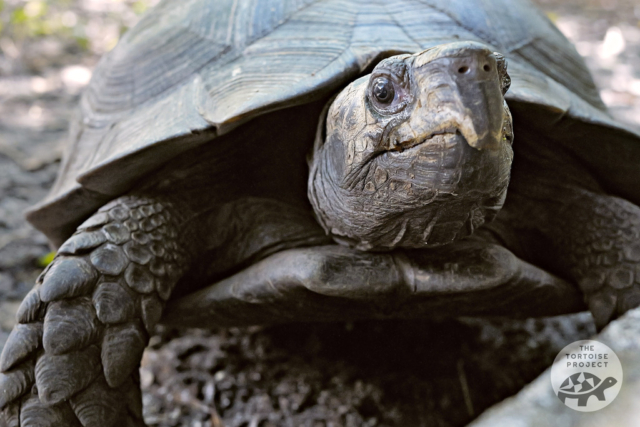
I’ve wanted to visit the Turtle Survival Alliance‘s turtle survival center for several years, and I finally got my chance at the 2023 TSA Symposium. This turtle sanctuary is ground zero for the TSA’s North American captive breeding program of some of the world’s most endangered turtles and tortoises. Early arrivers to the symposium got to take a field trip out to the center, and I was one of the first people on the bus.
The 10-year-old turtle survival center is set in the pinewoods of South Carolina’s coastal plain, and it feels like the middle of nowhere. It’s a beautiful campus with infrastructure for turtles and turtle-keepers alike. Some turtles are kept inside climate controlled buildings, and others that are open-air with just a roof to keep off rain. The tortoises were wandering around a fenced corral off a small barn-like outbuilding that reminded me of how you keep horses. Fifty acres is a nice amount of land, which gives the Turtle Survival Center plenty of room for expansion.
Our tour guide is Cris Hagen, director of animal management and one of the center’s founders. No surprise that he’s been a turtle nerd since forever. He’s got a deep personal interest and commitment to the center’s success. And he’s just one of those people with amazing empathy for the creatures of the earth, with a gift for enthusiastically sharing their life histories. Cris’s knowledge of all things turtle is awe-inspiring. He lifted out a couple of the most unusual turtles from their pens to show us — the perfectly named snake neck turtle and a big-headed turtle.
The sanctuary is home to 23 of the world’s most endangered turtle and tortoise species and more than 600 individual animals. Some of the species here are extinct in the wild. The sanctuary also provides a home for turtles that are confiscated from the illegal wildlife trade by the U.S. Postal Service or U.S. Fish and Wildlife Service officials. Many species — especially from Southeast Asia — feel right at home in South Carolina’s mild sub-tropical climate.
Successful breeding isn’t just about getting turtles to randomly mate and lay eggs, however. It’s a tightly controlled operation. Taking a page from racehorse and panda husbandry, the center maintains a studbook to guide matchmaking between eligible turtle pairs out of concern for maximizing genetic diversity. Eggs are incubated artificially, and the hatchlings kept indoors in special cages until they’re large enough to be placed outdoors.
As I would be reminded over the three days of conference sessions that followed, the Turtle Survival Alliance is living up to its mission of “zero turtle extinctions in the 21st century.” They’re running programs directly or partnering with others around the world in places like Madagascar, Belize, Bangladesh, India, Colombia, Myanmar, and elsewhere.








